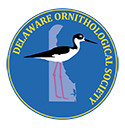monthly birding challenge: June
It's Baby Bird Season!
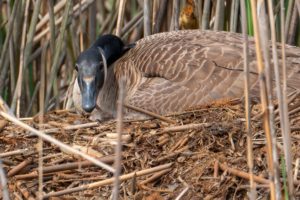
Here in Delaware, the month of June is prime breeding season for many bird species!
Breeding birds face many challenges. First they have to secure a nest site and a mate. Many species do this through territorial songs and visual displays. These are very species-specific, which means that this time of year is great for observing a wide variety of behaviors!
Next, the breeding birds must build a nest. Some nests are very elaborate (such as the hanging nests of Orioles) while others are very simple (such as the limited constructions of Mourning Doves). Depending on species, both adults might help build the nests or only one.
After construction and egg laying comes incubation! As with nest building, incubation may be the job of one or both of the adults. Some species (like cowbirds and cuckoos) leave this job to other species entirely by laying their eggs in the nests of other bird species!
Once they've hatched, nestlings have to be fed! This takes a lot of effort by bird parents, as nestlings need lots of high quality food in order to grow strong quickly. For example, a single pair of chickadees need between 6,000 to 9,000 caterpillars to successfully raise their offspring each year. Adults often continue to feed their young even after they have left the nest.
At this stage, the babies are called fledglings. You can often identify fledglings by their fluffy or incomplete plumage, juvenile coloring, and relative clumsiness as they figure out to use their wings for the first time!
CAN YOU OBSERVE SIGNS OF BREEDING BIRDS IN YOUR NEIGHBORHOOD? HOW MANY OF THE FOLLOWING CAN YOU IDENTIFY?
- An adult bird collecting nesting materials or building a nest
- A completed bird nest
- An adult bird incubating eggs (remember to keep a safe distance to avoid disturbing the birds while they are busy incubating!)
- An adult bird collecting food for their young
- A fledgling bird exploring outside the nest
Be sure to share your pictures and encounter stories- we would love to see them! Email [email protected] or post to the Red Knot Youth Birders Facebook group.
monthly birding challenge: September
Road Trip Snacks: Bird Foods for Migration
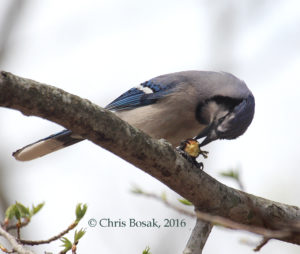
A Blue Jay eats an acorn at Selleck's Woods in Darien, Conn., April 2016.
September brings the start of songbird migration, as birds begin to leave their breeding grounds in the north and head for their overwintering grounds in the south. While each species will its own overwintering range, all migrating birds need one important thing- fat! Fat for a bird is like gas for your car. Without it, neither is moving! For birds, metabolizing fat gives them all the energy they need to fly long distances. Blackpoll Warblers, for example, need to fly nearly 1,800 miles each way (mostly over open water)!
So how do birds collect fat? They eat! Most songbirds focus on eating during the day so they can fly at night. Different types of songbirds eat different things, but to prep for their big flights they all need to eat a lot! One of the best ways to find migrating birds in the fall is to look for their foods. Warblers and flycatchers eat insects, while sparrows and finches eat seeds. Catbirds and Cedar Waxwings love to eat berries. Meanwhile, thrushes prefer to eat both insects and berries, while jays love nuts like acorns!
For this month’s challenge, CAN YOU FIND A BIRD EATING THESE FOODS?
- Insects
- Seeds
- Fruits
- Nuts
Be sure to share your pictures and encounter stories- we would love to see them! Email [email protected] or post to the Red Knot Youth Birders Facebook group.
monthly birding challenge: October
Fall is for Hawks (and eagles, and vultures, and falcons)!
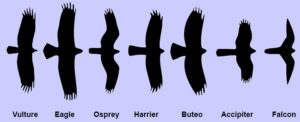
The month of October brings northwesterly winds, and those winds brings migrating raptors! During the fall, many hawks, eagles, vultures, and falcons begin their journey south for the winter just like the songbirds we explored in last month’s challenge. While some raptors (like Red-tailed Hawks) only migrate short distances, others have incredibly long migratory journeys. The Peregrine Falcon has one of the longest migrations in North America- some individuals can fly 15,500 miles in a single year!
One big difference between raptor migration and songbird migration is that raptors migrate during the day, which makes it possible to actually see them in flight instead of resting up. Instead of directly flapping all the way to their breeding grounds, many raptors use heated air currents called thermals. As the sun heats the atmosphere, pockets of heated air rise. Raptors use those thermals like an elevator to help them move high into the sky. From there, the birds can glide down to the next rising air current, which will carry them up again. This allows them to save energy while migrating. When large groups of birds circle within the same thermal, it is called a kettle.
So how should you look for migrating hawks? Head outside and look up! You will have better luck on days when a cold front is passing through, as many raptors take advantage of those fronts’ strong winds to travel. If the weather is right, you might be able to see a large kettle of raptors circling overhead, or you might see a few individual birds moving south. DOS has two hawk watches (Ashland Nature Center and Cape Henlopen State Park) that are great locations for watching raptor migration. The hawk watchers and other volunteers will be there to help point out migrating birds moving past.
For our October Challenge, we encourage you to go outside and look for migrating raptors! Can you spot a hawk soaring overhead? How about a kettle of birds circling in a thermal?
Be sure to share your pictures and encounter stories- we would love to see them! Email [email protected] or post to the Red Knot Youth Birders Facebook group.
monthly birding challenge: november
Wonderfully Weird Woodpeckers
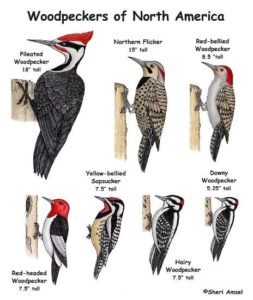 Have you ever spent any time looking up close at a woodpecker? They have some pretty amazing adaptations!
Have you ever spent any time looking up close at a woodpecker? They have some pretty amazing adaptations!
First, they have zygodactyl feet. This means they have two toes pointed forward and two toes pointed towards the back. This helps them grip bark and branches as they climb and down looking for food.
Most woodpeckers eat bugs. They use their long strong beaks to poke, probe, and pry under bark and leaves. Their skulls are built to protect their brains during all that hammering by reducing shock waves and compression. To reach their hidden foods, they need long tongues. In fact, their tongues are so long that they wrap around their skulls and also help with absorbing shock waves during foraging.
Finally, woodpeckers use their tail feathers as a prop to help them stay steady while they are climbing around and foraging. Their tail feathers are usually fairly short compared to other birds of a similar size, and the central shafts (known as the rachis) are very stiff and strong. They can handle the weight of the bird without bending too far!
Woodpeckers are found all around the world except for Australia, New Zealand, and New Guinea. In Delaware we can see 8 different types of Woodpeckers, which range in size from the tiny Downy Woodpecker to the giant Pileated Woodpecker.
For our November Challenge, we encourage you to go on a woodpecker hunt! Take a walk in your favorite birding spot and see if you can observe the following:
- Signs of a woodpecker foraging
- A woodpecker's stiff tail feathers
- The undulating flight of a woodpecker moving between trees
- A woodpecker drumming
- A woodpecker's zygodactyl feet
Be sure to share your woodpecker pictures and stories- we would love to see them! Email [email protected] or post to the Red Knot Youth Birders Facebook group.
monthly birding challenge: December
Christmas Bird Counts
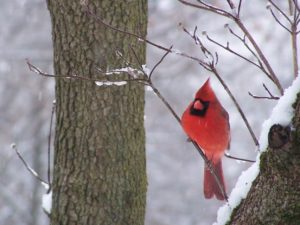
To many birders, December means one thing- Christmas Bird Counts! These counts began in 1900 as a response to the traditional Side Hunt that took place the day after Christmas. Instead of hunting birds, early conservationists went out and counted them! The population data collected is used to support species conservation measures around the world, including North and South America. See a map for worldwide locations here. Today’s counts are based on a 15 mile diameter circle. Birders work together to explore locations within the circle and compile a list of all the birds they can see and hear.
This month, we challenge you to participate in one of Delaware’s 7 Christmas Counts. We have arranged for youth birders and families to take part in the counts listed below. If you wish to participate in a different count than one of these four, see this list for who to contact.
In Person Count- Join us for the West Chester Count at Newlin Grist Mill Park in Glen Mills PA. We will meet at the Visitor Center at 9am and count along the park's trails. In previous years, woodpeckers, nuthatches, and belted kingfishers have been the highlights! Loaner binoculars will be available.
West Chester Count: Saturday December 18th 2021, email Jessica at [email protected] to RSVP
Feeder Watching- If you live in one of these circles, count birds at your backyard bird feeder, around your house, or in your neighborhood. Please contact the compilers listed for each count, to let them know you will be participating. Be sure to record start and stop time, number of individuals of each species, and distance traveled.
Bombay Hook Count: Sunday December 19th 2021, compiler Andy Ednie [email protected]
Milford Count: Tuesday December 21st 2021, compiler Chris Bennett [email protected]
Prime Hook & Cape Henlopen Count: Sunday January 2nd 2022, compiler Bruce Peterjohn [email protected]
Be sure to let us know what exciting bird species and behaviors you observe while taking part in the longest running citizen science project on Earth!
monthly birding challenge: January
The First Bird
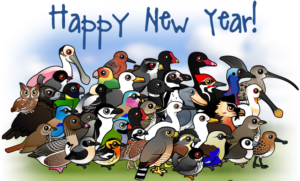 Each year, January is a month for firsts- first hikes, the first time trying new hobbies and resolutions, the first day back to school and work. For some birders, there’s another first to throw in the January mix- the first bird! Out of all the amazing, wonderful birds that live in our area, which bird will you see first in the new year?
Each year, January is a month for firsts- first hikes, the first time trying new hobbies and resolutions, the first day back to school and work. For some birders, there’s another first to throw in the January mix- the first bird! Out of all the amazing, wonderful birds that live in our area, which bird will you see first in the new year?
I think my first bird of 2022 will probably be an American Robin. We've had huge flocks of them roosting in the trees around my neighborhood over the last week. At the same time, maybe it will be something completely unexpected- birds are good at keeping birders on their toes!
If you enjoy keeping track of the birds you have seen (like your first bird) be sure to check out eBird! This is an international database of bird sightings, where birders from all over the world enter checklists with the names, numbers, and locations of birds they have seen. While keeping lists is absolutely not required to be a birder, it can be fun to look back and remember fun trips or special birds. You can also add pictures and sound recordings from your outings.
The data is also available to researchers who are studying birds around the world. For example, your sighting of a Black-bellied Whistling Duck in Delaware might help document that species’ spread up the eastern seaboard from its historic range in the south. Meanwhile, not finding an American Kestrel where they have always been seen in the past helps scientists track that species’ decline, so they can work to protect them better.
Ebird is available as a phone app and a website, so you can access it anywhere. Why don’t you try keeping a list the next time to take a walk? Get started by clicking the button below.
Be sure to share your first bird of 2022! Email Jessica at [email protected].
monthly birding challenge: February
Backyard Birding Challenge
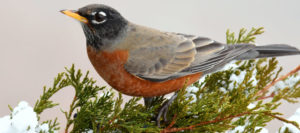
The weather may not seem great for birding in February, but that just means you can focus on birding closer to home! Instead of traveling to new locations to see birds, spend some time with the birds who share the neighborhood with you.
Participate in the Great Backyard Bird Count on February 18-21st!
2022 is the 25th year of this community science project, and much like December's Christmas Bird Count, helps scientists to understand changes in bird populations and distributions over time.
Step 1: Read all the details about the count HERE
Step 2: Count birds for at least 15 minutes (or more) at least once a day for the four days of the count.
Step 3: Submit your count data by March 1st using eBird
Thats it! Three easy steps to helping improve our understanding of birds around the world while also getting to know your feathery neighbors better.
Which species is the most common at your house? What species is the least common? Did you find any surprising birds? Be sure to share your observations in the Red Knot Youth Birders Facebook group!
monthly birding challenge: March
March Waterfowl Madness
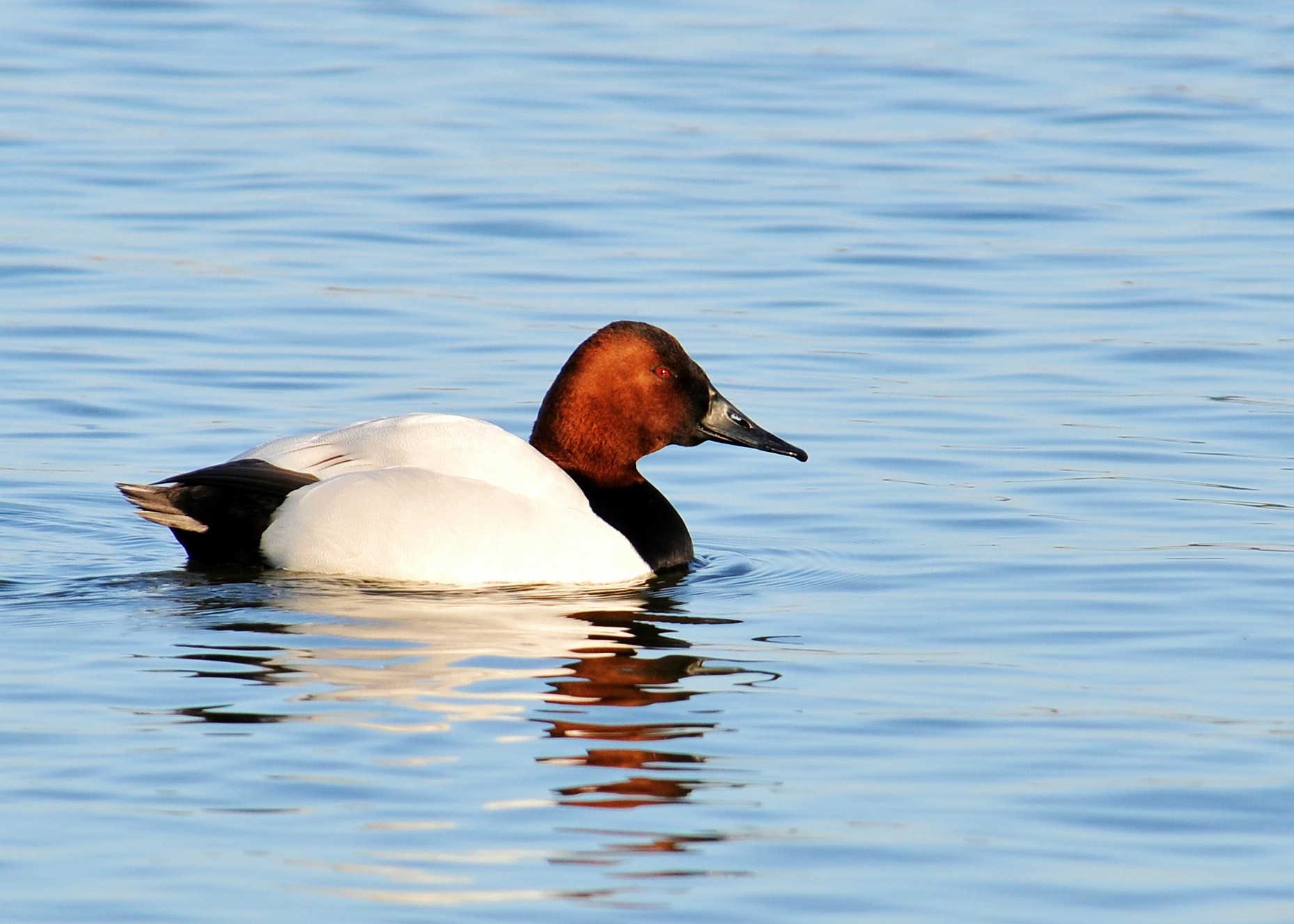
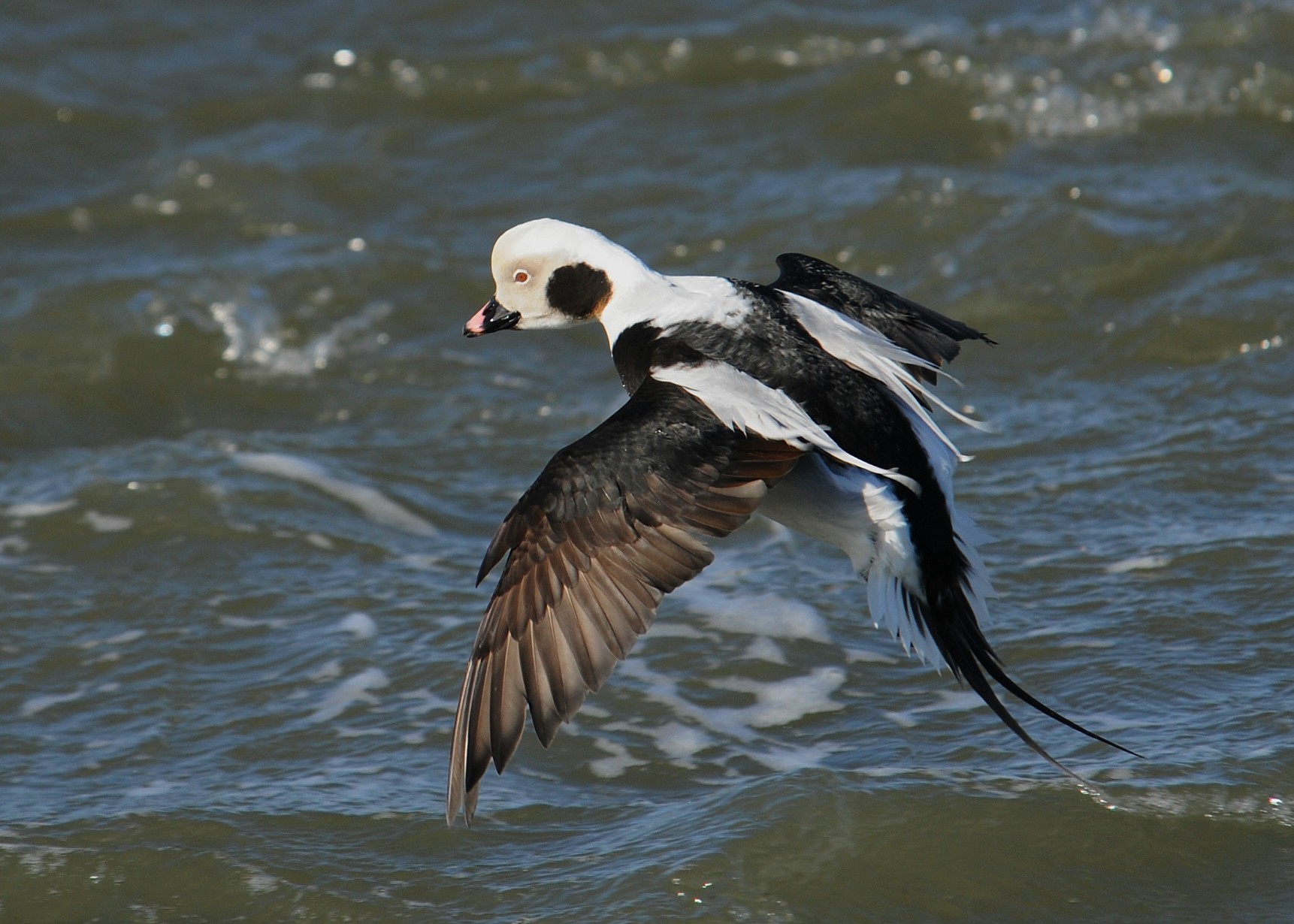
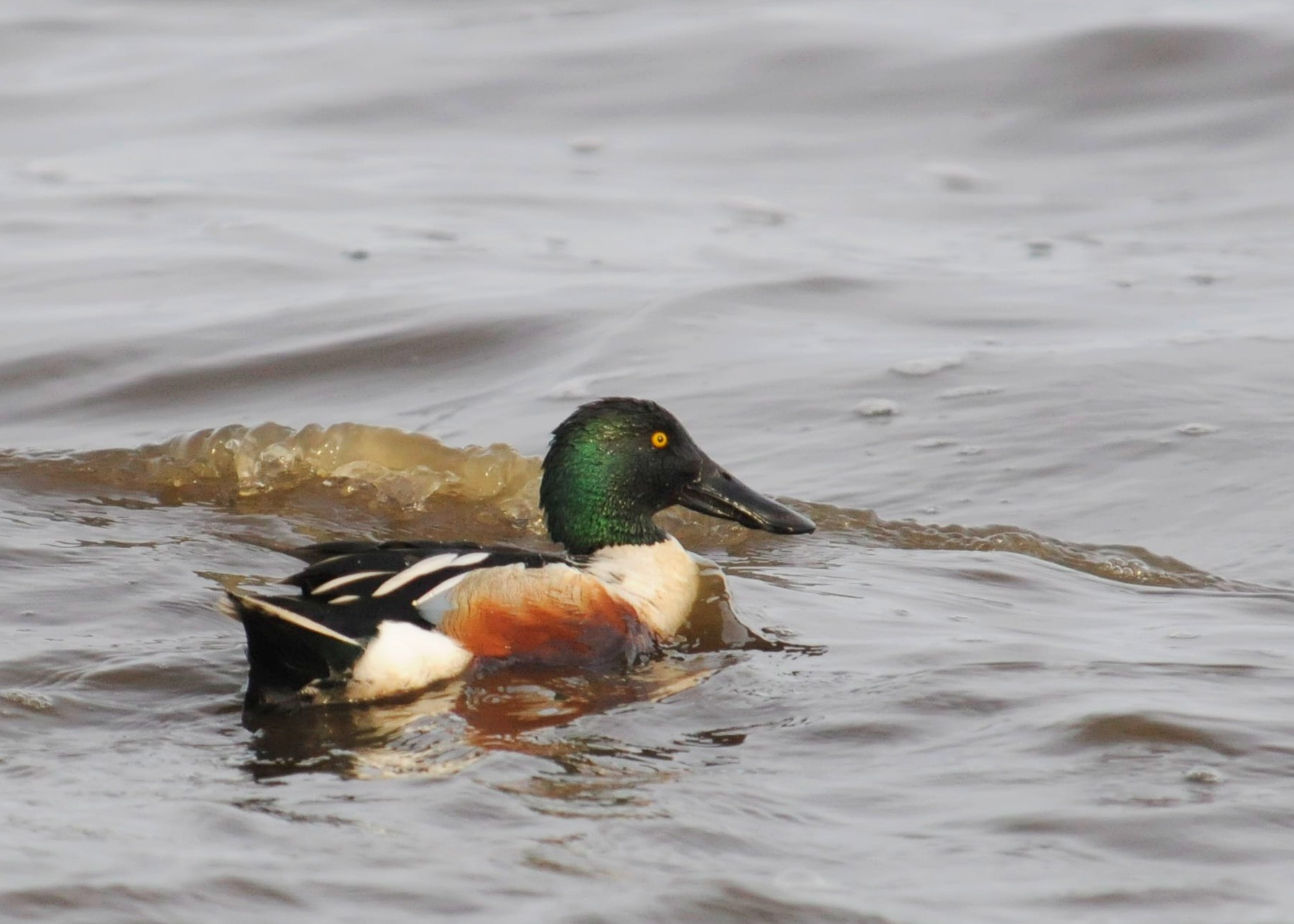
More than 30 species of waterfowl can be found in Delaware at this time of year! All winter long, huge flocks of ducks, geese, and swans have been feeding and sheltering in our wetlands, shallow open waters, estuaries, bays, and nearby fields. Now that March is here, even more of these birds are crowding into our region as they prepare to head north toward their breeding grounds. This makes the month of March an excellent time to challenge your waterfowl ID skills!
Waterfowl can be dabblers that feed on vegetation or divers that feed by diving under the surface of the water. They can be found in all kinds of water-based habitats and on land nearby, so head out to your neighborhood pond, creek, river, beach, or wetland to see which species are around.
Here are some suggested locations for prime waterfowl spotting in Delaware!
New Castle County: Brandywine Creek State Park, Peterson Wildlife Refuge, Augustine Wildlife Area- Ashton Tract
Kent County: Bombay Hook National Wildlife Refuge, Little Creek Wildlife Area, Ted Harvey Wildlife Management Area
Sussex County: Delaware Seashore State Park, Prime Hook National Wildlife Refuge, Silver Lake (Rehoboth Beach)
Can you spot a species of waterfowl you've never seen before? Be sure to share your observations in the Red Knot Youth Birders Facebook group!
Waterfowl photos for this month's challenge by Derek Stoner
monthly birding challenge: April
The Return of Spring Migrants
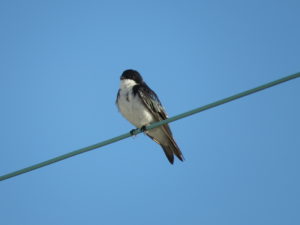
By the start of April, the first migrant songbirds have started to return to our region. Some of these migrants will be sticking around for the breeding season, while others have yet to finish their journey to breeding grounds farther north. For birders, spring migration brings the excitement of seeing old friends return and meeting new friends for the first time!
For this month, our challenge is to pay attention to the birds moving through your favorite birding spots. Can you spot a bird you haven't seen since fall? Is it going to be sticking around or will it take off for breeding grounds farther north?
Be sure to share your pictures and encounter stories- we would love to see them! Email [email protected] or post to the Red Knot Youth Birders Facebook group.
monthly birding challenge: May
Warblers Warblers Everywhere!
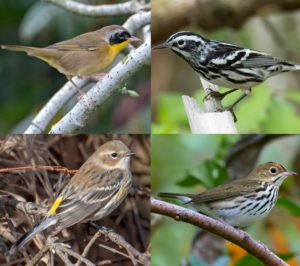 Spring migration is a favorite time of year for many birders, as species not seen since October fly north to their summer breeding grounds. Of those species moving north, some of the most exciting are the neotropical warblers! These small, brightly colored birds nest in the eastern deciduous and boreal forests of North America and spend their winters in Central and South America. Because they eat primarily insects, they are forced to move with the seasons to follow insect abundance.
Spring migration is a favorite time of year for many birders, as species not seen since October fly north to their summer breeding grounds. Of those species moving north, some of the most exciting are the neotropical warblers! These small, brightly colored birds nest in the eastern deciduous and boreal forests of North America and spend their winters in Central and South America. Because they eat primarily insects, they are forced to move with the seasons to follow insect abundance.
Warblers can be tricky to spot because they are small and constantly on the move. Many prefer to forage high up in the forest canopy, causing birders to end up with “warbler-neck” aches from spending so much time staring up into the treetops! 37 species of warbler have been seen in Delaware, with most moving through between April through June and September through November. Of those, 29 can be found in the state by early May. The chart below shows eBird records of warblers in Delaware over the course of the year.
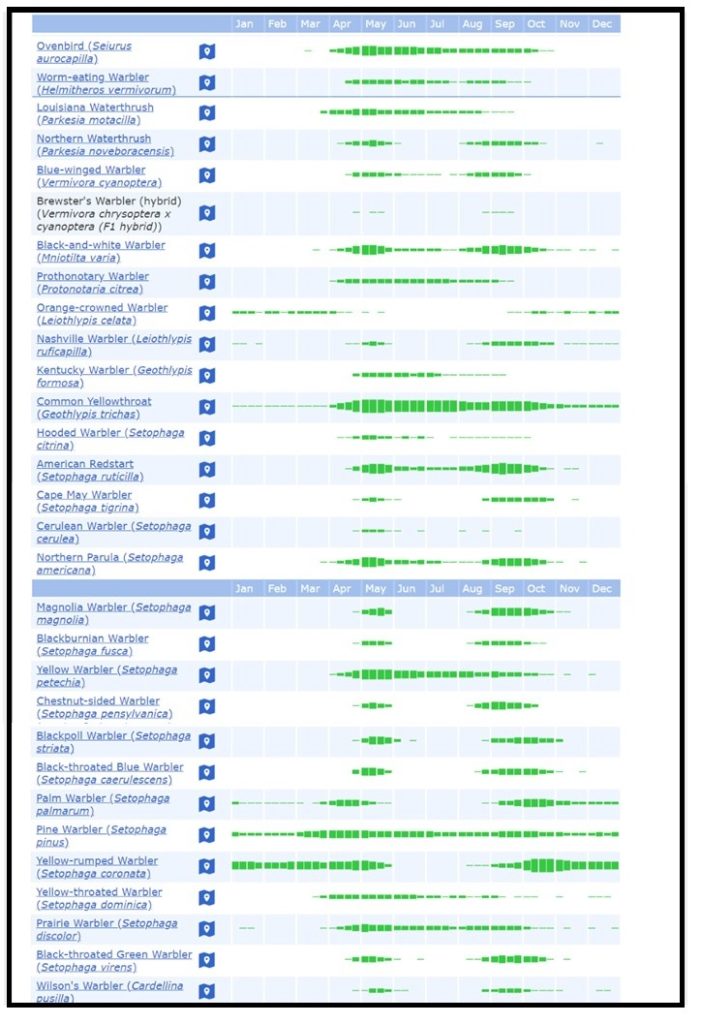
Some warblers are more easily seen than others. Here are four species that are fairly easy to see if you are in the right habitat!
Common Yellowthroat (upper left)- These yellow and brown birds can be found around habitat edges, particularly in marshes and grasslands. They like to forage down low in the tangled grasses and brush, hunting through the grasses and leaves for prey. The males can be distinguished by their black masks.
Yellow-rumped Warbler (bottom left)- One of the most common warblers, Yellow-rumped Warblers can be found in forests, where they flit between branches searching for prey on leaves and bark. Look for their bright yellow rump patches as they fly!
Black-and-White Warbler (upper right)- This eye-catching little bird can be found in forests, creeping head first down tree trunks as it probes into bark crevices looking for hidden prey. Their zebra-like stripes help them blend into shadowed tree trunks, so be sure to look carefully!
Ovenbird (bottom right)- The Ovenbird is a little larger than the other species listed here, but it is still smaller than a sparrow. They are sometimes confused for thrushes because of their black and white stripes. Be sure to look for their orange crown as they hop around on the forest floor searching for prey in the leaf litter!
HOW MANY WARBLER SPECIES CAN YOU FIND IN MAY?
Be sure to share your pictures and encounter stories- we would love to see them! Email [email protected] or post to the Red Knot Youth Birders Facebook group.
